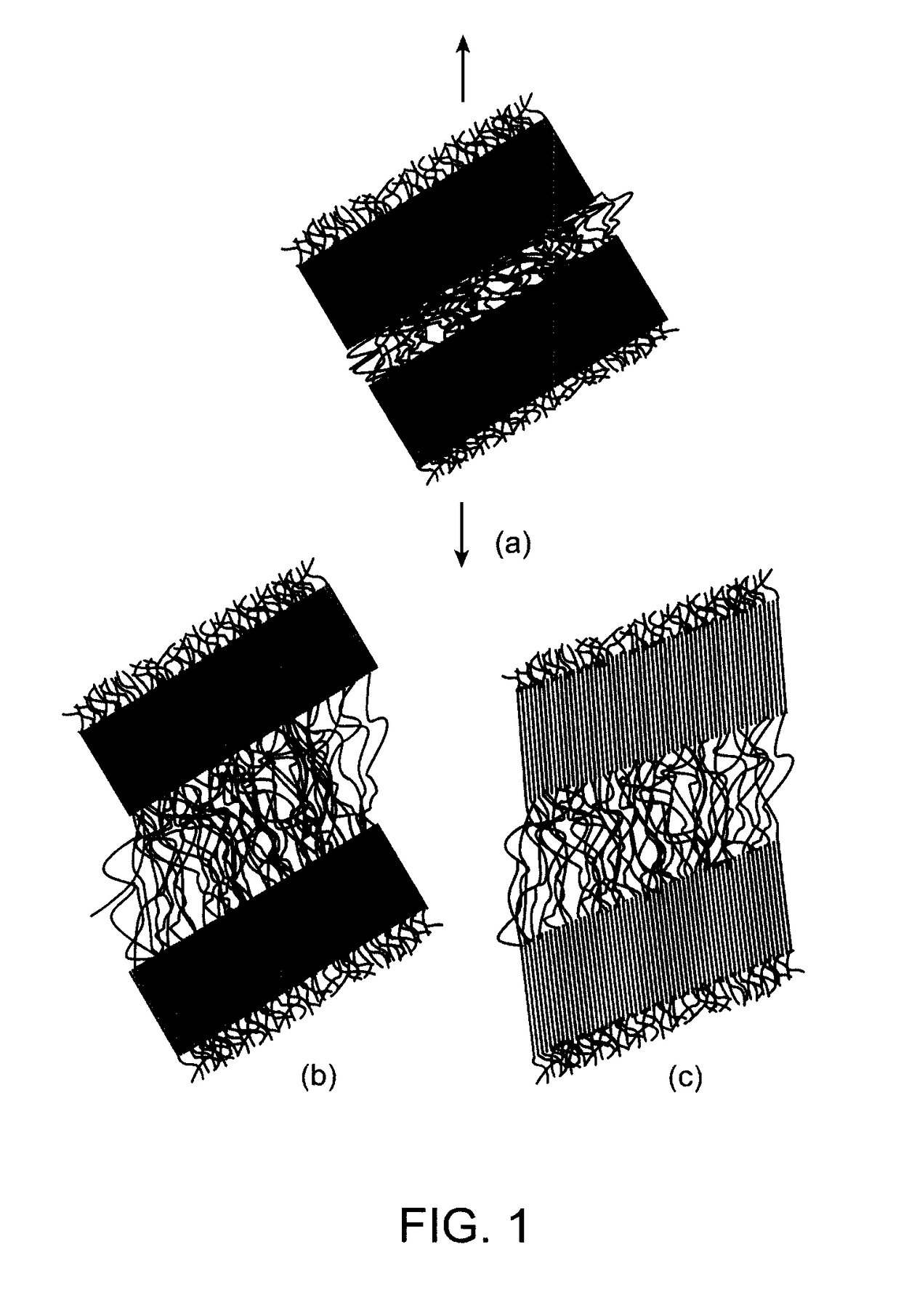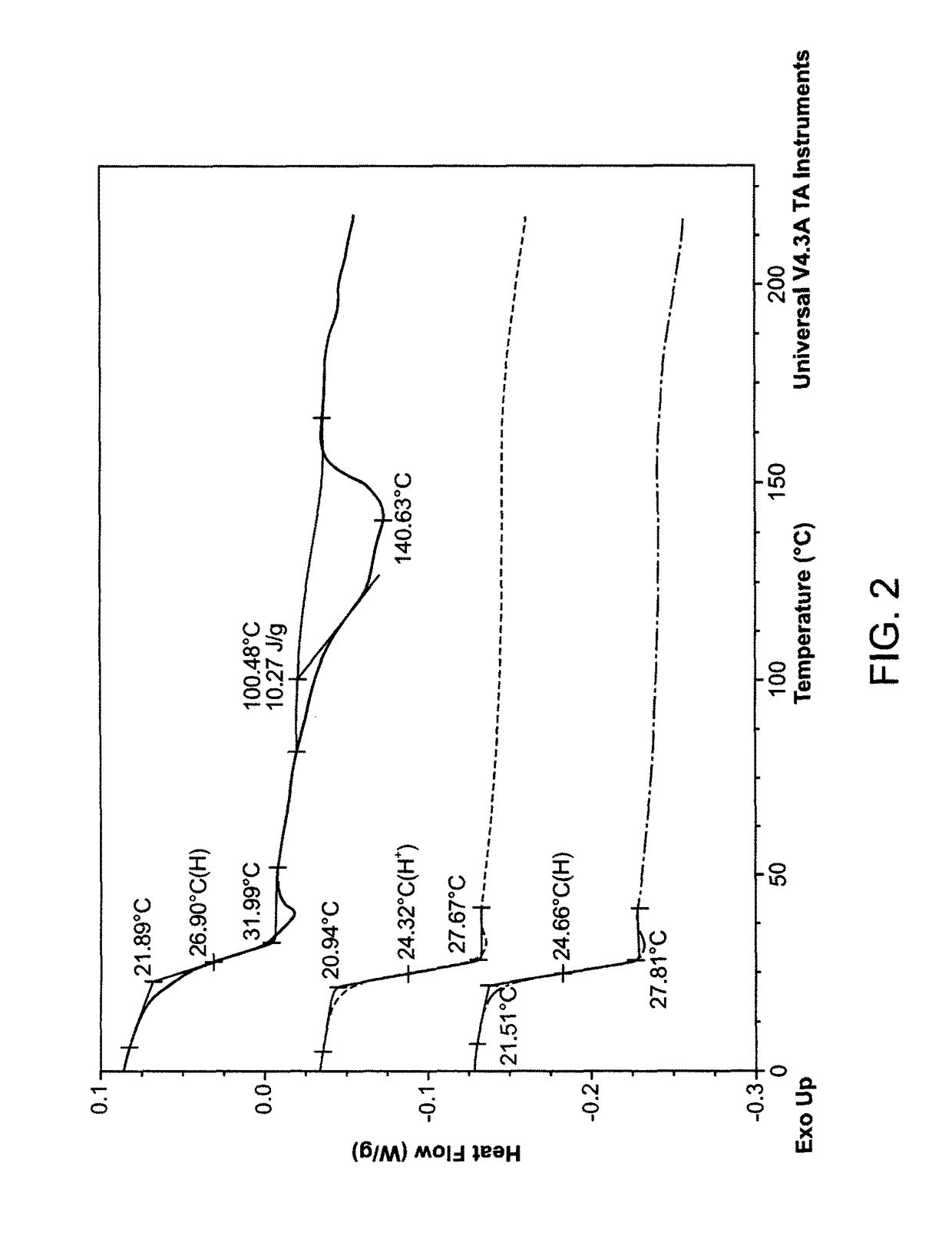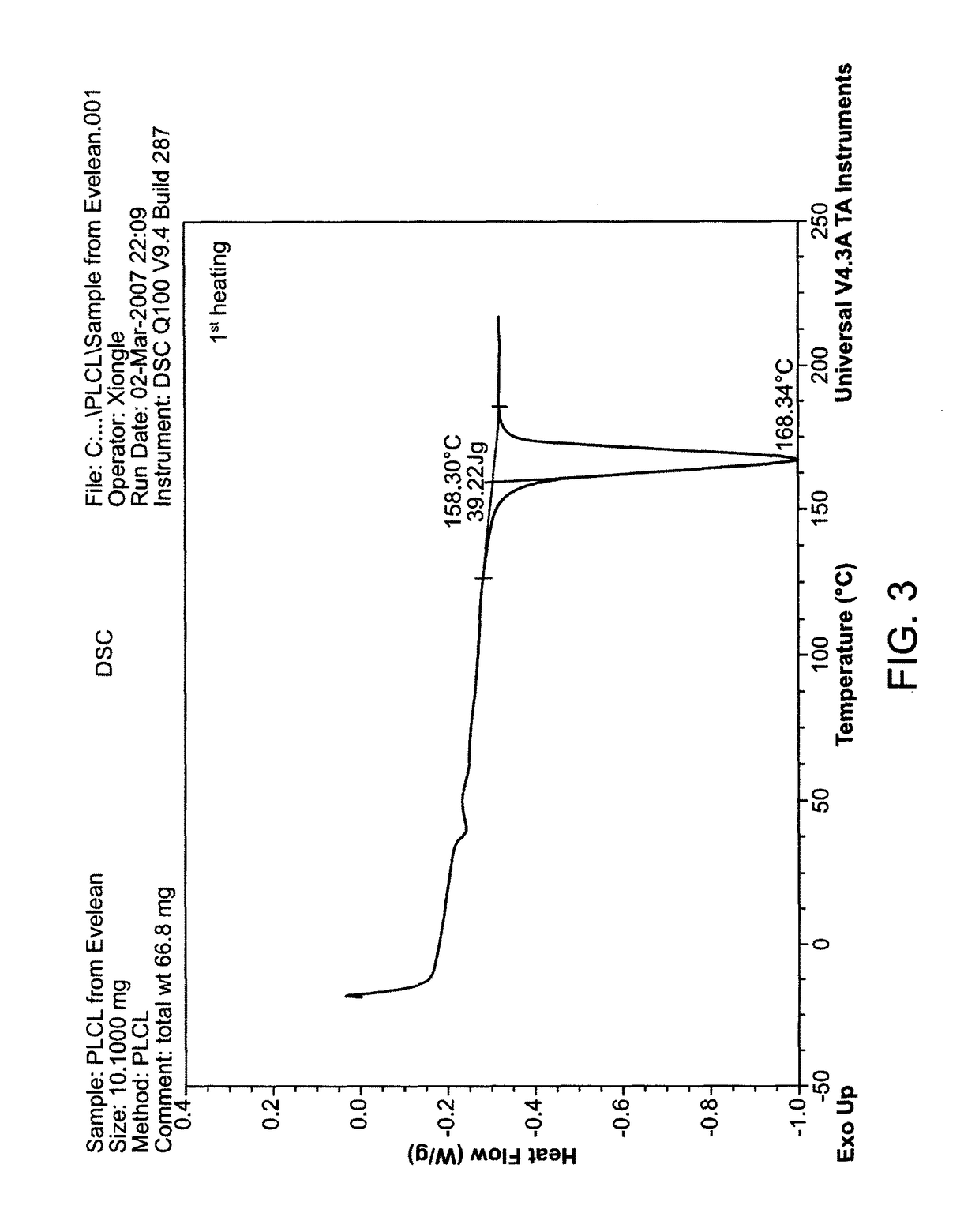Bioabsorbable semi-crystalline polymer for controlling release of drug from a coating
- Summary
- Abstract
- Description
- Claims
- Application Information
AI Technical Summary
Benefits of technology
Problems solved by technology
Method used
Image
Examples
example 1
f Randomness on Drug Release
Materials
[0101]PLLA-CL (L-lactic acid / caprolactone=70 / 30, mol / mol) was purchased from PURAC, Netherlands (PURAC). PLA / PCL (L-lactic acid / caprolactone=75 / 25, mol / mol) was synthesized in Dr. Todd Emrick's lab, University of Massachusetts (UMASS), Amherst, Mass. (UMASS). DSC studies were performed on the PURAC and UMASS polymers (FIGS. 2 and 3). Randomness of the polymers was analyzed by NMR studies.
[0102]Both polymers were respectively dissolved into solvents (acetone based solvent) and mixed with everolimus (d / p=1 / 3) followed by being respectively coated onto Vision 12 mm small stents (available from Abbott Vascular, Santa Clara, Calif.). Drug release in porcine serum (PS) was analyzed on day 1 and day 3 in test use of the coated stents.
Results
[0103]FIG. 2 shows a DSC thermal graph for PLLA-CL 75 / 25 synthesized by UMASS. FIG. 3 shows a DSC thermal graph for PLACL 70 / 30 from PURAC. The randomness analysis and drug release results are summarized in Ta...
example 2
ase from Coatings Formed of PLLA-PCL
[0106]Random PLLA-CL (L-lactic acid / caprolactone=75 / 25, mol / mol) was synthesized (randomly). The polymer and drug everolimus was mixed using acetone / MIBK (90 / 10, vol / vol) and coated onto stent (d / p=1 / 1, 1 / 2 and 1 / 3), SEM studies showed that the coating has a good mechanical integrity (Figure not shown). Drug release profile was measured in porcine serum.
Results
[0107]FIG. 4 shows a DSC thermogram for the PLLA-CL 75 / 25 polymer. Blue curve is the first heat, while the red curve is the second heat.
[0108]FIG. 5 shows a DSC thermogram of the coated stent. Blue curve is the first heat, while the red curve is the second heat.
[0109]The thermal analysis of the PLLA-CL polymer demonstrates the semi-crystalline morphology in the polymer (FIG. 4). Only one Tg was found around 27° C., indicating that this is a random copolymer. Based on the analysis, there is another Tg at 79° C. A melting peak was also shown in this raw material with a peak around 140° C.
[0110...
PUM
| Property | Measurement | Unit |
|---|---|---|
| Molar ratio | aaaaa | aaaaa |
| Bioabsorbable | aaaaa | aaaaa |
Abstract
Description
Claims
Application Information
 Login to View More
Login to View More - R&D
- Intellectual Property
- Life Sciences
- Materials
- Tech Scout
- Unparalleled Data Quality
- Higher Quality Content
- 60% Fewer Hallucinations
Browse by: Latest US Patents, China's latest patents, Technical Efficacy Thesaurus, Application Domain, Technology Topic, Popular Technical Reports.
© 2025 PatSnap. All rights reserved.Legal|Privacy policy|Modern Slavery Act Transparency Statement|Sitemap|About US| Contact US: help@patsnap.com



